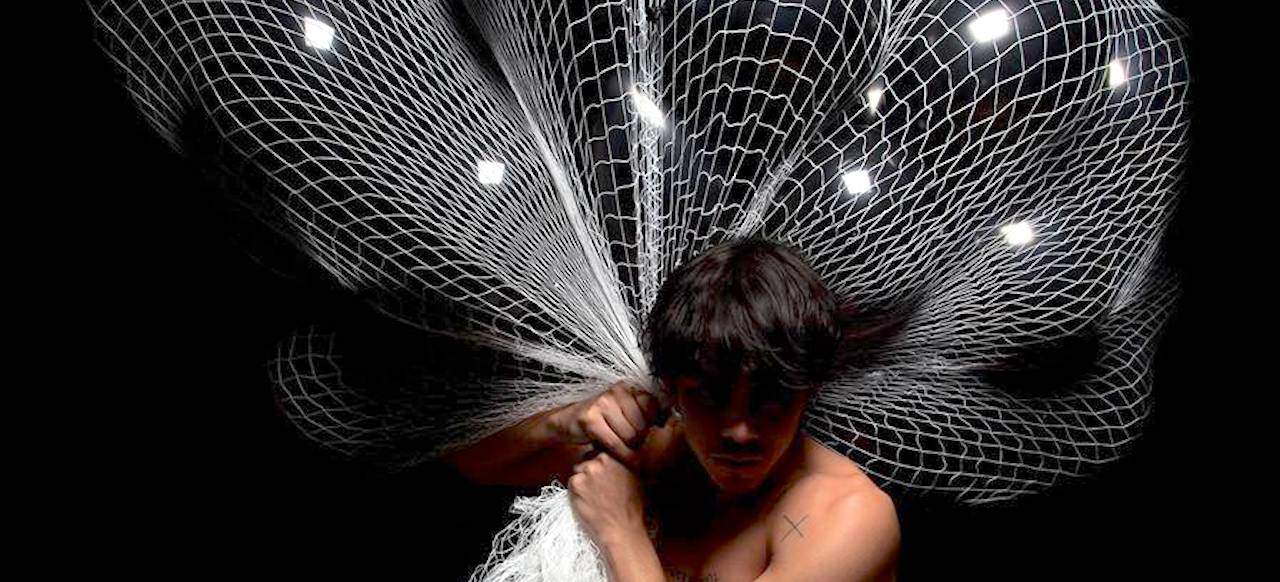Domestic Departures: Abdul Abdullah, Jasper Knight, James Oram
Three young artists reflect on self-identity, stereotypes and the dancing wheel of chance.
Overview
In an ever more divisive world, we are increasingly encouraged to sloganise ourselves, to identify as one thing. But Domestic Departures at Chalk Horse explores the contradictory nature of the self. Jasper Knight, James Oram and Abdul Abdullah each offer works that reflect on what it means to turn desire into reality.
Knight’s miniature centrepiece, a 3D printed model of his family, sits at the heart of the space. It’s almost like a pivot between the two rooms. Then there are two collages built from clashing wood textures, various rulers and bits of broken paintings (glimmers of his usual colour scheme shining through). With these works, Knight is turning away from paint and stepping into a more sculptural realm.
They can be thought of as an evolution of the hard-edge modernism he is known for, expanding into new media and harder edges. With the family in the periphery, there is a sense in which fatherhood has forced a shift in his practice — something which is simultaneously destructive and creative.
You probably caught a glimpse of Abdullah’s portrait of Richard Bell at this year’s Archibald Prize — he's tipped as an up-and-comer. In this show, his dramatic photographs are real show-stealers. Unlike Knight’s works, which seem to start at the centre and gradually unfurl, symbols from the outside world filter into Abdullah’s work.
He is often described as blending personal and political. For example, The re-introduction of Australian Knighthood could be a sly take on Tony Abbott’s recent (ill-judged) reach back to his English roots. The image itself is more guerrilla than knight. Sporting an excess of Australian flags, there are bared fists and eyes peeping through a balaclava. It’s a topical look at the threat of home-grown terror and the surge of prejudices that accompany it. There’s a simmering menace to these works that offsets the sunnier and more homely feel of Knight’s practice.
Oram’s works seem more loosely attached to the personal. Nevertheless, his video work, Stacks, is a mesmeric portrait of chance and desire. On one side of the screen, Scratchies are scratched in tunnel vision, and on the other side, a pyramid of playing cards is carefully stacked in black space. With the circular framing, the flecks of scratched paper become surprisingly poignant. They look like the material residue of disappointment.
Both Knight and Abdullah appear to engage with ‘types’ — father, artist, jihadi, outsider —compounding and conflating them. On the other hand, Oram offers a more contemplative counterpoint. We might think through these works as representing different degrees of consciousness and control. While Abdullah is actively working to subvert stereotypes, Knight reflects on who he is in different contexts. And finally, Oram is geared toward something more universal, looking at the poetry of chance and the unpredictable forces that dictate who we are and what we want.





